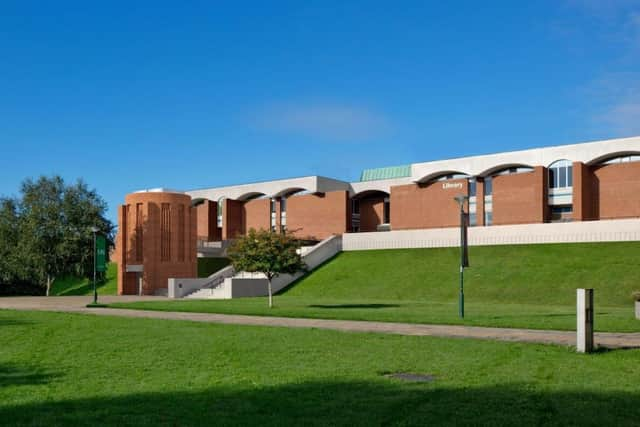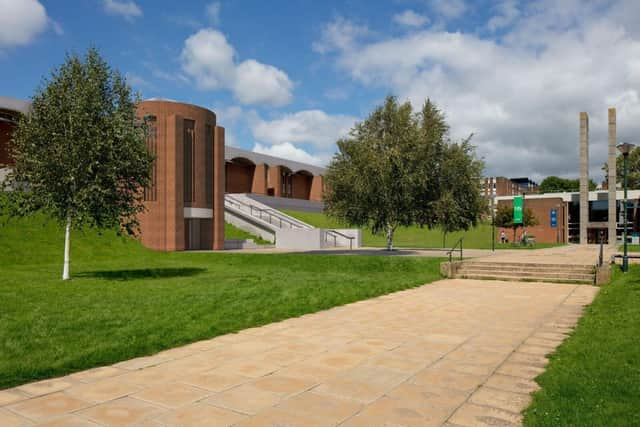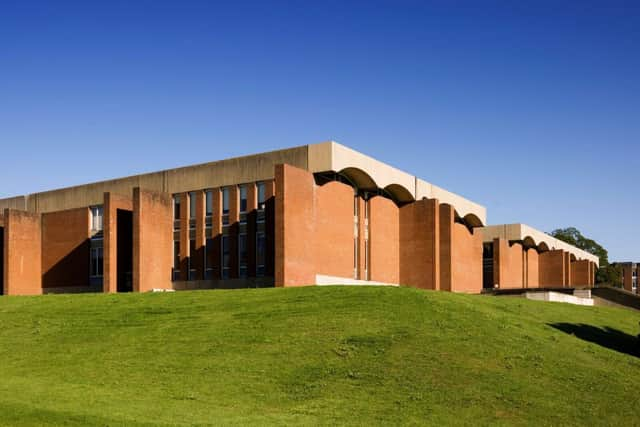Historic England supports University of Sussex plans for listed library
and live on Freeview channel 276
Historic England advisers worked closely with the University’s design team to help find a practical and creative design, which also respected the Falmer campus’s modernist architecture designed by Sir Basil Spence.
At the heart of the proposals by Keith Williams Architects, is a new circular brick lift tower which will better connect the main public space to the Library’s main entrance, and a new gently inclined ramp which will create a link to the northern part of the campus. Planning permission and listed building consent have recently been granted. Construction is expected to begin later this year.
Advertisement
Hide AdAdvertisement
Hide AdThe freestanding lift tower has been sensitively designed to complement the other Spence buildings on site, eight of which are listed. Their monumental forms in local red brick, flint and concrete were officially recognised for their architectural and historic significance in the early 1990s. The University Library was built between 1962 and 1971. As a Grade II* listed building it is among the top 10% of England’s most significant historic places.


Alma Howell, Inspector of Historic Buildings and Areas at Historic England, said: “By working with Historic England during the design process, the University has successfully balanced the need for better access to the Library and northern campus with the conservation and celebration of Sir Basil Spence’s 1960s design, which is one of the things that makes the place special.
“Adapting any historic building to meet 21st century needs requires a level of compromise, and we believe the agreed design is the best solution possible. We are excited to see these plans realised on site to benefit students, staff, and the wider University community.”
Fiona Courage, Deputy University Librarian at the University of Sussex, said: “We are delighted that planning permission has been granted to make our Grade II* listed Library more accessible. Our plans fulfil a long-held aspiration to create a modern accessible Library main entrance, and with the support of Historic England, we have created designs that both honour the iconic architectural legacy of Sir Basil Spence and meet the needs and expectations of our University community.”
Advertisement
Hide AdAdvertisement
Hide AdAs the Government's expert advisor on England’s heritage, part of Historic England’s role is to advise on development proposals affecting the historic environment. Historic England was involved in detailed discussions with the University of Sussex during the development of the plans alongside Brighton & Hove City Council.


Sir Basil Spence
The University of Sussex was one of seven new universities built in England in the 1960s. Sussex was the first, and architect Sir Basil Spence was appointed in 1959, as his unique design for the new Coventry Cathedral was nearing completion.
Sir Basil Spence (1907-1976) was responsible for numerous churches, schools, housing schemes and especially university buildings during his career, including the Erasmus Building at Queen’s College, Cambridge - the first modernist building on ‘the Backs’.
Other notable buildings by Spence are Coventry Cathedral (Grade I listed), Hyde Park Barracks in London, and the British Embassy in Rome. He was President of the Royal Institute of British Architects (RIBA) between 1958 and 1960.


Listed Libraries
Advertisement
Hide AdAdvertisement
Hide AdEngland is home to some of the greatest examples of library architecture in the world. From the magnificent John Rylands Library in Manchester to the bold British Library in London, many are listed buildings.
There are 875 entries on the National Heritage List for England for libraries, including 97 Grade I, 109 Grade II*, and 669 Grade II listed buildings which were either built as libraries or used as a library in their history. They are often listed with other civic and educational buildings such as town halls, art galleries, universities or Institutes.
Historic England has published research on the design and development of libraries, particularly public libraries. Find out more: